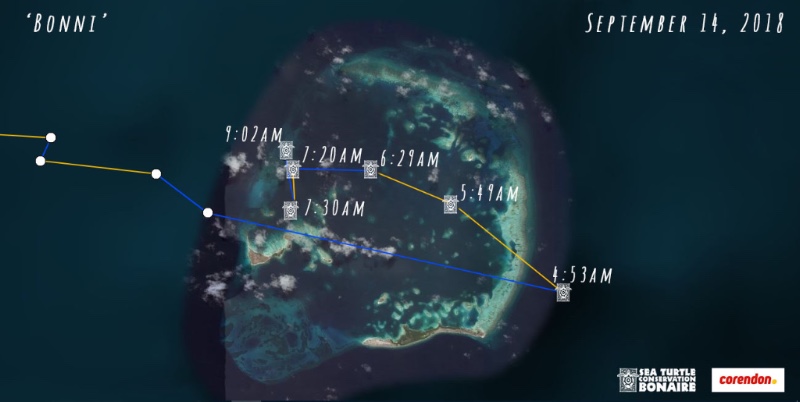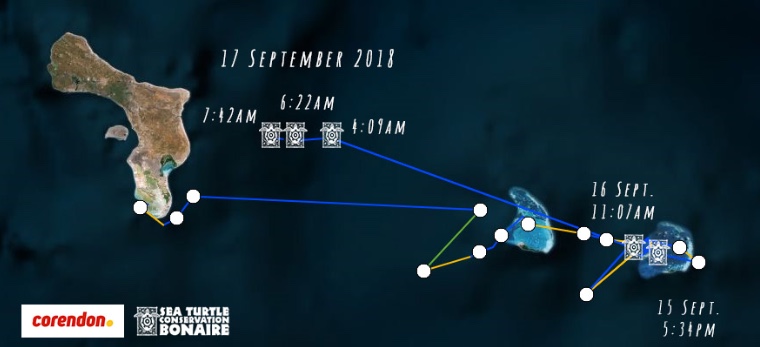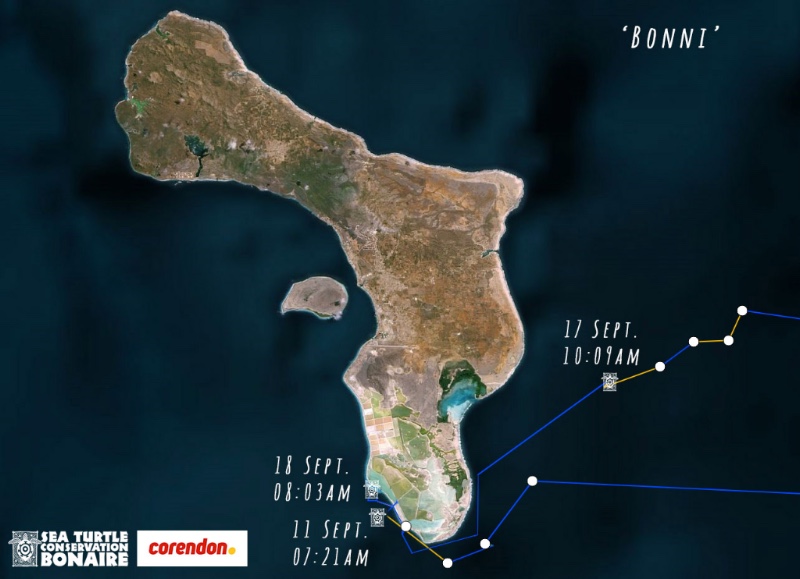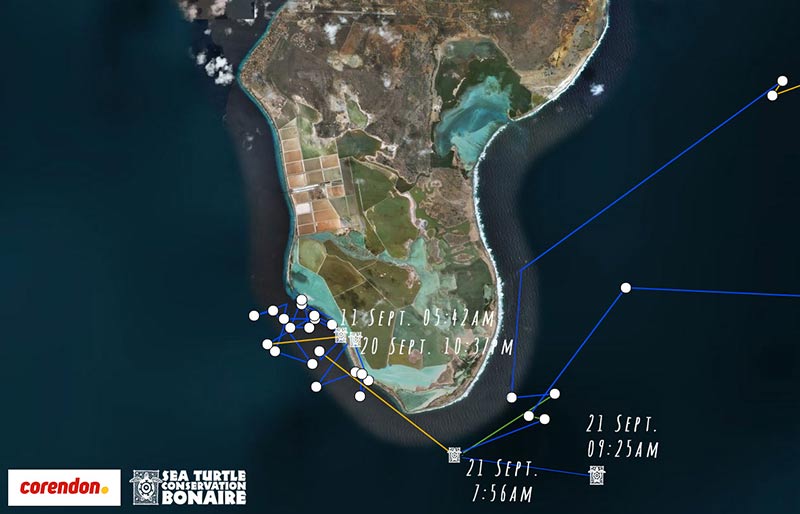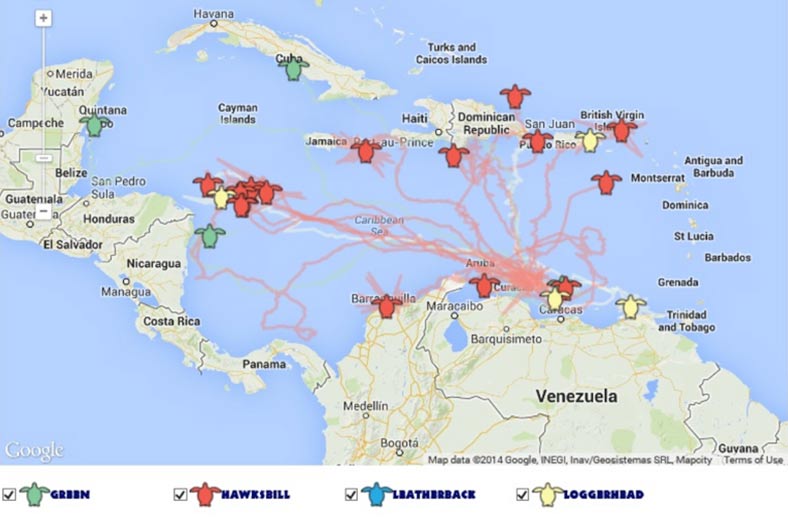My Bonni lies over the ocean
My Bonni lies over the sea
My Bonni lies over the ocean
Oh, bring back my Bonni to me…
–Traditional Scottish Folksong
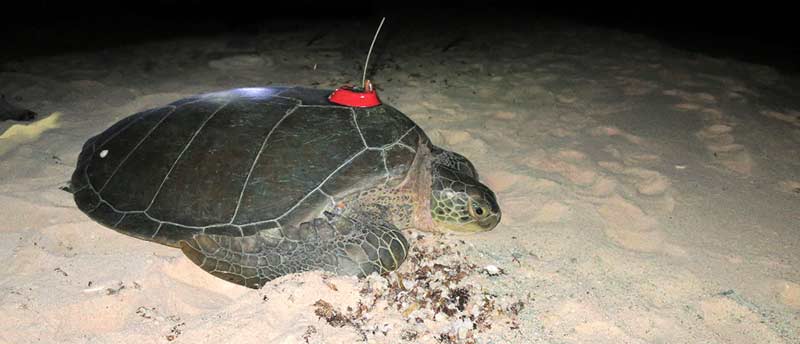
Turtle Bonni surprises everyone.
It appears that humans are not the only ones to pine for Bonaire when away…..recently we reported on Bonni, a green sea turtle, which laid her third (and supposed-to-be-final) nest on Bonaire. On September 10, 2018, Bonni was outfitted with a satellite tracking device just before she went to sea and it was expected that she would set her compass to her home feeding grounds, sending location transmissions each time she rose to the surface to breathe, and providing Sea Turtle Conservation Bonaire (STCB) with important data on the migration of Bonaire’s sea turtles.
Bonni’s location four days later–September 14, 2018.
Signals from the satellite transmitter showed that Bonni was cruising along the eastern part of the Las Aves Archipelago.
Bonni’s location one week later–September 17, 2018.
Although still in the Las Aves Archipelago on September 16, 2018, when STCB researchers checked on Bonni, they were surprised to see that Bonni was back in the open ocean and swimming back toward Bonaire.
Bonni’s migration behavior does pose several questions. For example, is it common for green turtles to travel this far during their inter-nesting periods? And, will Bonni return to Bonaire to lay one or more nests or is she merely passing by to continue north? Or is it possible that Bonni lives on Bonaire, even though Bonaire’s habitat is a developmental habitat and not a feeding ground for adult turtles? Read on!
Bonni returns to Bonaire–September 19, 2018.
Bonni has indeed returned to Bonaire! On the morning of September 19, 2018, Bonni was just north of where she left Bonaire after STCB deployed the transmitter in the night of Monday, September 10.
Bonni lays her fourth nest of the season on Bonaire–September 20, 2018.
Bonni came ashore once again on the night of September 20, 2018, and, unbelievably, she laid her fourth nest of this season.
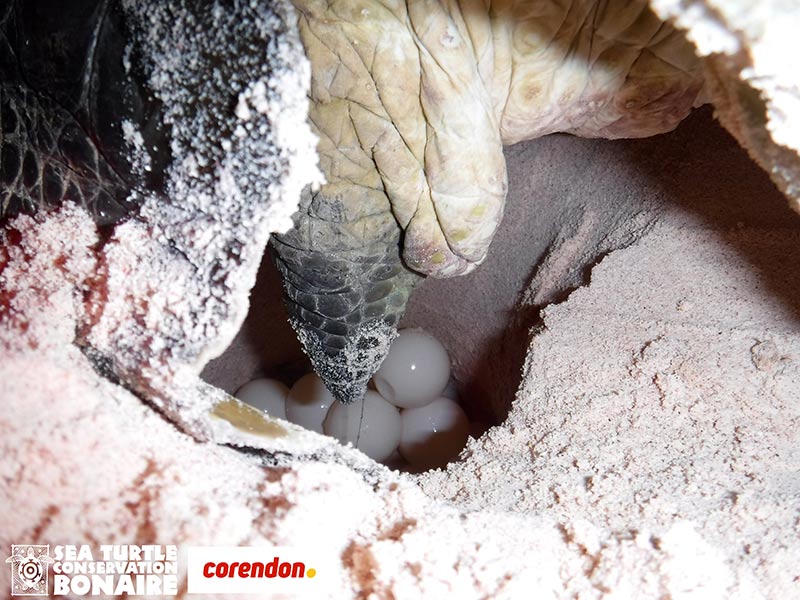
Stay tuned for more on this surprising story!
About tracking Bonaire’s sea turtles.
Sea Turtle Conservation Bonaire (STCB) began tracking adult sea turtles in 2003. Since that time, they have tracked 25 turtles, and Bonni is now the 26th. They have learned over the years that sea turtles born on Bonaire live as far as 2500 kilometers/1500 miles away and as close as Los Roques, only 175 kilometers/108 miles to the east.
Where do Bonaire-born turtles go?
Since the tracking program began in 2003, STCB has tracked sea turtle migrations from Bonaire west to the Gulf of Mexico and to the coastal waters of Nicaragua, Honduras and Colombia; north to Cuba, Puerto Rico, the Dominican Republic, the Virgin Islands, and east to Isla de Margarita in Venezuela. These countries are “range states” of Bonaire’s breeding sea turtles; regions where our turtles spend portions of their lives. Turtles protected on Bonaire may continue to be protected, or they may become vulnerable when they migrate, depending upon the degree of protection afforded by their migration and destination range states.
How is the tracking done?
STCB attaches a small, non-intrusive satellite transmitter to a sea turtle’s carapace (shell). Every time the turtle surfaces to breathe, the transmitter sends data about the turtle’s location to NOAA satellites. The accuracy of the location data varies depending on the number of messages received from the transmitter, environmental conditions, and relative positions of the transmitter and the satellites. Each transmission is picked up by a receiver on the satellite and is then plotted onto a map.
About Sea Turtle Conservation Bonaire.
Sea Turtle Conservation Bonaire (STCB) is a non-governmental research and conservation organization that has been protecting sea turtles since 1991. Bonaire is their headquarters and home to three of the world’s six endangered or critically endangered species of marine turtles: the hawksbill, green, and loggerhead turtle. STCB is a member of the Wider Caribbean Sea Turtle Conservation Network (WIDECAST).
STCB is very active in the community to help protect these endangered turtles. Visitors can learn more by arranging for a Turtle Nest Monitoring excursion, available during the turtle breeding season.
(Source: Sea Turtle Conservation Bonaire)


